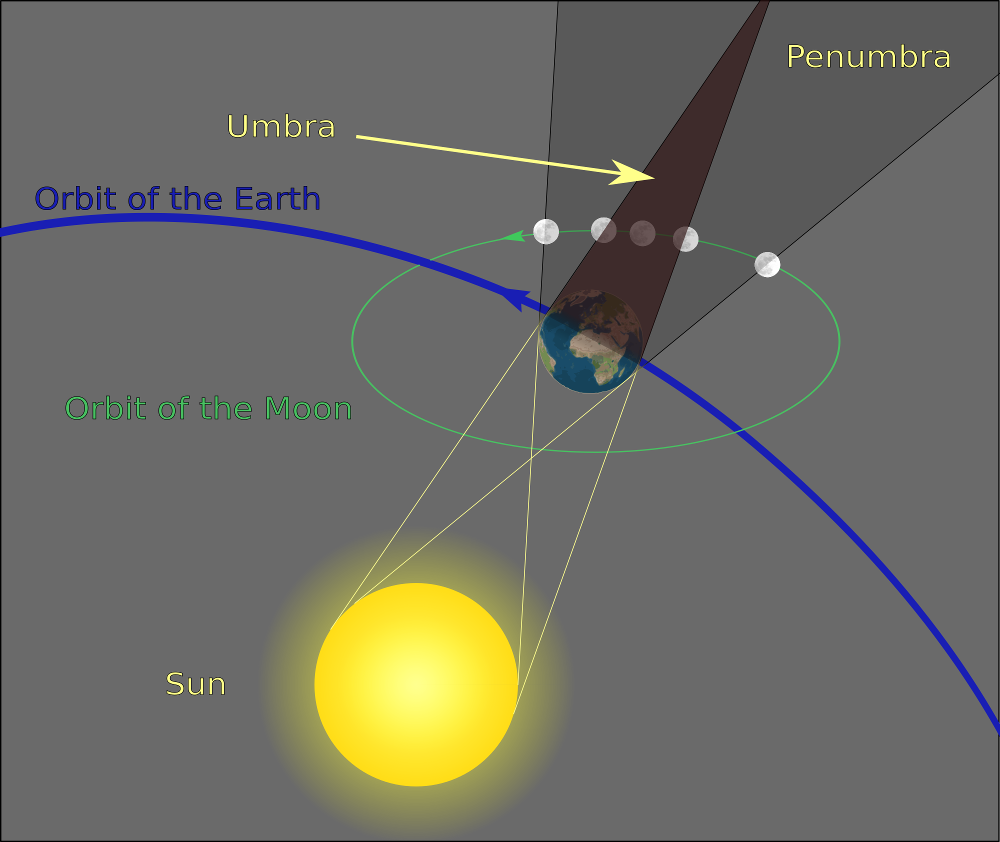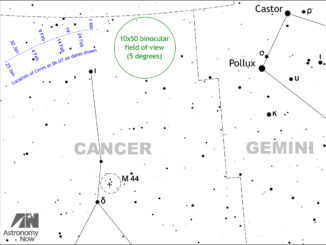
The observing year has got off to a good start with a supermoon and planetary conjunctions in the morning sky, but January bows out in style with a total lunar eclipse occurring in the constellation of Cancer. For the best views of the full Moon gliding through the Earth’s shadow you need to be in north-western North America, Oceania, East Asia or central and eastern Russia. Sadly, most of Europe (including the UK), Africa and South America miss out this time.
View from Oceania
Observers in Australasia have pretty much a ringside seat for seeing all of the lunar eclipse. As seen from the New Zealand capital, the event occurs in the small hours of 1 February where totality begins at 1:52am, mid-eclipse occurs at 2:30am with the Moon 30 degrees high in the northern sky, and totality ends at 3:08am NZDT. It’s a similar story for the Australian capital, except the start of totality, mid-eclipse and end of totality occur at 11:52pm (on 31 January), 12:30am (on 1 February) and 1:08am AEDT, respectively.
View from the Americas
If you reside in North America, particularly the northwest of British Columbia, Yukon, or anywhere in Alaska, you’re in luck as you can also see the entirety of the eclipse on 31 January. Further south in the United States, just the total phase of the eclipse may be seen from all States west of a line drawn between North Dakota and New Mexico before moonset. As seen from Los Angeles and San Francisco, for example, totality begins at 4:52am, mid-eclipse occurs at 5:30am with the Moon 15 degrees high in the western sky, and totality ends at 6:08am PST.
View online
If you happen to be on the opposite side of the Earth to where the action’s taking place, or you’re clouded out, you can still view the event online. The Griffith Observatory in Los Angeles starts Livestream broadcasting on 31 January at 10:45 UT (10:45am GMT), while NASA Live starts its coverage at 10:30 UT (10:30am GMT).
If the eclipsed Moon looks red, why is this a Blue Moon?

A total lunar eclipse occurs when the full Moon passes through the Earth’s shadow. You might reasonably assume that at such times the Moon’s light, which is entirely composed of reflected sunlight, should be totally extinguished — and that would be true if the Earth was devoid of an atmosphere. Instead, the shell of air surrounding our planet acts like a weak lens, refracting a portion of the reddened light from all the sunrises and sunsets of the Earth onto the face of the Moon, lending it a coppery-red hue.
Traditionally, the name Blue Moon was given to the third of four full Moons in a single astronomical season (meaning Blue Moons will occur on 18 May 2019 and 22 August 2021), but largely due to the US radio program StarDate in the 1980s and trivia games, the term Blue Moon has come to mean the second of two full Moons occurring in a single calendar month.
Full Moons occur every 29.5306 days, on average, which is the lunar synodic period. Since most months are 30 or 31 days long, it’s possible for two full Moons to fit in a single month if the first occurs near the beginning. Since the first full Moon of January 2018 arrived at 2:25am GMT on the 2nd, the second full Moon squeezes in at 1:28pm GMT on 31 January.
Between the years 2001 and 2099, there are 41 Blue Moons. There are three years in which a Blue Moon occurs twice: 2018 (January and March), 2037 (January and March) and 2094 (January and April). Blue Moons can also occur on consecutive years: 2066 and 2067. (Note: these are all UTC dates; the number of events in other time zones will vary considerably.)
So, according to at least one definition, if the weather is favourable in the British Isles on Wednesday, 31 January you will see a Blue Moon rising in the east-northeast around 5pm GMT — but the total lunar eclipse will be over. And if you’re clouded out in the UK, console yourself with the thought that (weather permitting) on 27 July 2018 you’ll get to see a rising totally eclipsed Moon in the same binocular field of view as planet Mars at a close opposition!



